- Home
- James Joyce
The Restored Finnegans Wake
The Restored Finnegans Wake Read online
JAMES JOYCE
The Restored Finnegans Wake
Edited and with a Preface and Afterword by
DANIS ROSE and JOHN O’HANLON
Note by
SEAMUS DEANE
Appendices by
HANS WALTER GABLER and DAVID GREETHAM
PENGUIN CLASSICS
an imprint of
PENGUIN BOOKS
Contents
Note on the new edition of Finnegans Wake by SEAMUS DEANE
Preface by DANIS ROSE and JOHN O’HANLON
FINNEGANS WAKE
Appendix 1 by HANS WALTER GABLER
Appendix 2: ‘Begin Again…Stop!’ by DAVID GREETHAM
Afterword by DANIS ROSE and JOHN O’HANLON
Acknowledgements
Note on the new edition of Finnegans Wake
This should never have happened. It was, from the outset, an impossible task. But here it is. I still find it hard to believe that all the obstacles have been cleared, although I find it easy to believe that I actually don’t know the half of it, all the difficulties encountered in research, funding, travelling, overcoming scepticism and hostility and then in finding the resource to sustain a commitment that certainly would have made my heart fail. It is astonishing and pleasing beyond measure to find that we now have a critical edition of Finnegans Wake.
Danis Rose and John O’Hanlon have achieved what has been for many readers unimaginable. They have given us both the archaeological sedimented layers and the structuring principles of the famous Work in Progess and then, out of that, the clear reading text. We already knew from Danis Rose’s work on the Notebooks that the scholarship involved was vast and painstaking. We also knew that the text of Finnegans Wake was, in one sense of the word, composed of those notebook materials and yet, in another sense, created out of them. This is a fascinating example of composing and composition, of one becoming the other and yet both remaining distinct. The sheer agglomerative scale of Joyce’s undertaking and the narrative form in which he rendered it have always provoked, since it first began to appear, a degree of outrage, derision, various denunciations and announcements that the author had finally been inundated by the miscellaneousness that had menaced Ulysses and had surrendered completely to the wild pedantry that had at times made it so funny and monotonous.
There has always been a large majority of readers for whom Finnegans Wake is, as part of its rationale, unreadable; indeed, unreadability has always been part of its attraction, the pseudo-suave explanation for never having read it. That view of, approach to and refusal of the work are all now outdated. The new edition brings Finnegans Wake to its audience again, but this time with the barriers of twentieth-century critical reception (if that is the word) cleared away.
It is a different matter for Joyceans. They have long been acclimatized to this architecture, this Beaubourg of the literary arts, and have also been acclimatized to enduring and representing the ridicule that is generated by the clash between research and creativity that inspires and is parodied by Joyce’s late work. With this edition that antinomy too begins to crumble. It is not the clash but the intimacy between research and creativity, between information gathering and its mobilization in structural forms, that Finnegans Wake has always asserted. The most recondite and the most proverbial forms of knowledge share a kinship; but to see that kinship materialize in the form of art is a miracle.
This wonderful edition makes the miracle visible to us; it has been waiting to happen for a long time. It is now seventy years since the wait began. A salute to the editors, Danis Rose and John O’Hanlon, who have ended the wait and given us an opportunity – created against incredible odds – to break out of our critical slumber and see this masterpiece as it should be seen, clean and radiant again.
SEAMUS DEANE
Preface
James Joyce’s Finnegans Wake represents the summit of twentieth-century literary production in the English language. This work – not least because of its fabled difficulty and the extensive period of its complex composition – requires critical editing more than any other modern novel. The available reading text is corrupt and has hardly changed from its original publication in 1939. Furthermore, the book as book has never been typographically reset so that, page by page, its physical appearance has remained static, allowing its familiarity to seep into the very words themselves, diminishing the impact of their radical beauty. The present edition rectifies this by offering a fully restored and emended reading text of Finnegans Wake in a typographical setting that has been thoroughly overhauled and redesigned. It is not a replacement for the 1939 edition – for the received version will always retain its historical importance – but an alternative to it.
The new reading text is restored in that it seeks to recreate and recover the text precisely as James Joyce wrote it – in notebooks, drafts, fair copies, typescripts and proofs – over the course of a sixteen-year period. It is emended in that – given the long passage of time and the enormous number of documents involved – absolute precision in recovery is unattainable; the desired ideal of a definitive edition is practically, if not theoretically, impossible. It can at best be approximated. The gaps in the material evidence can only be filled by what textual scholars term editorial judgment. From time to time an editor must call upon his or her knowledge and experience – of the accepted practices of scholarly editing and of the particular author and work at issue – in order to evaluate alternative readings that have differing degrees of reliability and probability. For a reading text, that is to say, for a realization of the work as a work of literary art for the general public rather than as a comprehensive analysis of the evidence suitable for scholars, decisions ultimately have to be made.
Such a deep analysis, one that has occupied the editors for more than thirty years, has nevertheless been achieved. The publication of this new reading text is an end-result of that protracted labour. The full analysis will be made available to scholars and to the interested public in the form of an electronic hypertext as soon as circumstances permit. The hypertext is described in greater detail in the afterword that closes this short introductory volume.
The new text differs from the old in about 9000 instances. This sounds grander than it is. Finnegans Wake comprises some 220,000 words, or about six times that number of characters: letters, spaces and punctuation marks. The changes vary from corrections in the spellings of individual words (yes, even in Finnegans Wake such errors occur!) to the restoration of missing conjunctions and marks of punctuation, to the realignments of phrases (when these ended up other than where Joyce intended) and to the repair of inadvertently fragmented sentences. Overwhelmingly, the changes pertain to the syntax (the flow of the words) rather than to the semantics (their individual meanings). Syntactic changes are more important than they might at first seem. Finnegans Wake has often been described as music: as such, it is music of sense as much as it is music of sound, and, like all music, it must flow unhindered to be heard.
Gentle reader, were you to ask How should I read this book? we would answer: passively, like any good book, neither too fast nor too slow. Do not pause because you cannot understand a word or words: you are not expected to understand it all. Imagine yourself a child, leaning over the banisters, listening to the grown-up banter going on below. You are learning a language: a night language. Morning will come and the clouds of unknowing will begin to dissipate.
In an enterprise as ambitious as the preparation of a critical edition of Finnegans Wake, perfection is unattainable. Errors of execution will inevitably occur. For these we apologize, yet we are confident that they represent only a tiny minority of the changes that have ensued in the reading text and for which we are res
ponsible. In particular, the Estate of James Joyce is not responsible for any of the details of the new text, nor should it be.
This preface follows a prefatory note by Seamus Deane (novelist, poet, critic and editor of the Field Day Anthology of Irish Writing) and precedes appendices by Hans Walter Gabler (editor of the Critical and Synoptic Edition of Ulysses, with which our edition of Finnegans Wake began its life as a companion project) and by David Greetham (author of the standard text-book on critical editing, Textual Scholarship: an Introduction, and founder of the Society for Textual Scholarship) and, finally, an afterword by the editors.
DANIS ROSE and JOHN O’HANLON
I
riverrun, past Eve and Adam’s, from swerve of shore to bend of bay, brings us by a commodious vicus of recirculation back to Howth Castle & Environs.
Sir Tristram, violer d’amores, fr’over the short sea, had passencore rearrived from North Armorica on this side the scraggy isthmus of Europe Minor to wielderfight his penisolate war: nor had topsawyer’s rocks by the stream Oconee exaggerated themselse to Laurens County’s gorgios while they went doublin their mumper all the time: nor avoice from afire bellowsed mishe mishe to tauftauf thuartpeatrick: not yet, though venisoon after, had a kidscad buttended a bland old isaac: not yet, though all’s fair in vanessy, were sosie sesthers wroth with twone nathandjoe. Rot a peck of pa’s malt had Jhem or Shen brewed by arclight and rory end to the reggin-brow was to be seen ringsome on the aquaface.
The fall (bababadalgharaghtakamminarronnkonnbronntonnerronnt
uonnthunntrovarrhounawnskawntoohoohoordenenthurnuk!) of a once wallstrait oldparr is retaled early in bed and later on life down through all christian minstrelsy. The great fall of the offwall entailed at such short notice the pftjschute of Finnegan, erse solid man, that the humptyhillhead of humself prumptly sends an unquiring one well to the west in quest of his tumpty-tumtoes: and their upturnpikepointandplace is at the knock out in the park where oranges have been laid to rust upon the green since devlins first loved livvy.
What clashes here of wills gen wonts, oystrygods gaggin fishygods! Brékkek Kékkek Kékkek Kékkek! Kóax Kóax Kóax! Úalu Úalu Úalu! Quáouáuh! Where the Baddelaires partisans are still out to mathmaster Malachus Micgranes and the Verdons catapelting the camibalistics out of the Whoyteboyce of Hoodie Head. Assiegales and boomeringstroms. Sod’s brood, be me fear! Sanglorians, save! Arms apeal with larms appalling. Killykillkilly: a toll, a toll. What chance cuddleys, what cashels aired and ventilated! What bidimetoloves sinduced by what tegotetabsolvers! What true feeling for their’s hayair with what strawng voice of false jiccup! O here here how hoth sprowled met the duskt the father of fornicationists but (O my shining stars and body!) how hath fanespanned most high heaven the skysign of soft advertisement! But waz iz? Is eut? Ere were sewers? The oaks of ald now they lie in peat yet elms leap where ashes lay. Phall if you but will, rise you must: and none so soon either shall the pharce for the nunce come to a setdown secular phoenish.
Bygmester Finnegan, of the Stuttering Hand, freemen’s maurer, lived in the broadest way immarginable in his rushlit toofarback for messuages before joshuan judges had given us numbers or Helviticus committed deuteronomy (one yeastyday he sternely stuck his tete in a tub for to watsch the futures of his fates but ere he swiftly stook it out again, by the might of Moses, the very water was eviperated and all the guenneses had met their exodus so that ought to show you what a pentschanjeuchy chap he was!) and during mighty odd years this man of hod, cement and edifices in Toper’s Thorp piled buildung supra buildung pon the banks for the livers by the Soangso. He addle liddle phifie Annie ugged the little craythur. Wither hayre in honds tuck up your partinher. Oftwhile balbulous, mithre ahead, with goodly trowel in grasp and ivoroiled overalls which he habitacularly fondseed, like Haroun Childeric Eggeberth, he would caligulate by multiplicables the alltitude and malltitude until he seesaw by neatlight of the liquor wheretwin ’twas born his roundhead staple of other days to rise in undress maisonry upstanded (joygrantit!), a waalworth of a skyerscape of most eyeful hoyth entowerly, erigenating from next to nothing and celescalating the himals and all, hierarchitectitiptitoploftical, with a burning bush abob off its baubletop and with larrons o’toolers clittering up and tombles a’buckets clottering down.
Of the first was he to bare arms and a name: Wassaily Booslaeugh of Riesengeborg. His crest of huroldry, in vert with ancillars, troublant, argent, a hegoak, poursuivant, horrid, horned. His scutchum, fessed, with archers strung, helio, of the second. Hootch is for husbandman handling his hoe. Hohohoho, Mister Finn, you’re going to be Mister Finnagain! Come-day morm and, O, you’re vine! Sendday’s eve and, ah, you’re vinegar! Hahahaha, Mister Funn, you’re going to be fined again!
What then agentlike brought about that tragoady thuddersday this municipal sin business? Our cubehouse still rocks as earwitness to the thunder of his arafatas but we hear also through successive ages that shebby choruysh of unkalified muzzlehimissilehims that would blackguardise the whitestone ever hurtleturtled out of heaven. Stay us wherefore in our search for righteousness, O Sustainer, what time we rise and when we take up to toothpick and before we lump down upown our leatherbed and in the night and at the fading of the stars! For a nod to the nabir is better than a wink to the wabsanti. Otherways wesways like that provost scoffing bedoueen the jebel and the jypsian sea. Cropherb the crunchbracken shall decide. Then we’ll know if the feast is a flyday. She has a gift of seek on site and she all-casually ansars helpers, the dreamydeary. Heed! Heed! It may half been a missfired brick, as some say, or it mought have been due to a collupsus of his back promises, as others looked at it (there extand by now one thousand and one stories, all told, of the same). But so sore did abe ite ivvy’s holired abbles (what with the wallhall’s horrors of rollsrights, carhacks, stone-engens, kisstvanes, tramtrees, fargobawlers, autokinotons, hippohobbilies, streetfleets, tournintaxes, megaphoggs, circuses and wardsmoats and basilikerks and aeropagods and the hoyse and the jollybrool and the peeler in the coat and the mecklenburk bitch bite at his ear and the merlinburrow burrocks and his fore old porecourts, the bore the more, and his blightblack workingstacks at twelvepins a dozen and the noobibuses sleighding along Safetyfirst Street and the derryjellybies snooping around Tell-No-Tailors’ Corner and the fumes and the hopes and the strupithump of his ville’s indigenous romekeepers, homesweepers, domecreepers, thurum and thurum in fancymud murumd and all the uproor from all the aufroofs, a roof for may and a reef for hugh butt under his bridge suits tony) wan warning Phill filt tippling full. His howd feeled heavy, his hoddit did shake. There was a wall of course in erection. Dimb! He stottered from the latter. Damb! He was dud. Dumb! Mastabatoom, mastabadtomm, when a mon merries his lute is all long. For whole the world to see.
Shize? I should shee! Macool, Macool, orra whyi deed ye diie, of a trying thirstay mournin? Sobs they sighdid at Fillagain’s chrissormiss wake, all the hoolivans of the nation, prostrated in their consternation and their duodisimally profusive plethora of ululation. There was plumbs and grumes and cheriffs and citherers and raiders and cinemen too. And all gianed in with the shoutmost shoviality. Agog and magog and the round of them agrog. To the continuation of that celebration until Hanandhinnigan’s extermination! Some in kinkin corass, more kankan keening. Belling him up and felling him down. He’s stiff but he’s steady, is Priam Olim! ’Twas he was the dacent gaylabouring youth. Sharpen his pillowscone, tap up his bier! E’er-awhere in this whorl would ye hear sich a din again? With their deepbrow fundigs and the dusty fidelios. They laid him brawdawn alanglast bed. With a bockalips of finisky fore his feet. And a barrowload of guenesis hoer his head. Tee the tootal of the fluid hang the twoddle of the fuddled, O!
Hurrah, there is but young glebe for the owl globe wheels in view which is tautaulogically the same thing. Well, Him a being so on the flounder of his bulk like an overgrown babeling, let wee peep, see, at Hom, well, see peegee ought he ought, platterplate . Hum! From Shopalist to Bailywick or from ashtun
to baronoath or from Buythebanks to Roundthehead or from the foot of the bill to ireglint’s eye he calmly extensolies. And all the way (a horn!) from fjord to fjell his baywinds’ oboboes shall wail him rock-bound (hoahoahoah!) in swimswamswum and all the livvylong night, the delldale dalppling night, the night of bluerybells, her flittaflute in tricky trochees (O carina! O carina!) wake him. With her issavan essavans and her patterjackmartins about all them inns and ouses. Tilling a teel of a tum, telling a toll of a teary turty Taubling. Grace before Glutton. For what we are, gif, a gross if, we are, about to believe. So pool the begg and pass the kish for crawsake. Omen. So sigh us. Grampupus is fallen down but grinny sprids the boord. Whase on the joint of a desh? Finfoefom the Fush. Whase be his baken head? A loaf of Singpantry’s Kennedy bread. And whase hitched to the hop in his tayle? A glass of Danu U’Dunnell’s foamous olde Dobbelin ayle. But, lo, as you would quaffoff his fraudstuff and sink teeth through that pyth of a flowerwhite bodey behold of him as behemoth for he is noewhemoe. Finiche! Only a fadograph of a yestern scene. Almost rubicund Salmosalar, ancient fromout the ages of the Agapemonides, he is smolten in our mist, woebecanned and packt away. So that meal’s dead off for summan, schlook, schlice and goodridhirring.
Yet may we not see still the brontoichthyan form outlined, aslumbered, even in our own nighttime by the sedge of the troutling stream that Bronto loved and Brunto has a lean on? Hic cubat edilis. Apud libertinam parvulam. Whatif she be in flags or flitters, reekierags or sundyeclosies, with a mint of mines or beggar a pinnyweight, arrah, sure, we all love little Anny Ruiny, or, we mean to say, lovelittle Anna Rayiny, when unda her brella, mid piddle med puddle, she ninnygoes nannygoes nancing by. Yoh! Brontolone slaaps, yoh snoors! Upon Benn Heather, in Seeple Isout too. The cranic head on him, caster of his reasons, peer yuthner in yondmist. Whooth? His clay feet, swarded in verdigrass, stick up starck where he last fellonem, by the mund of the magazine wall, where our maggy seen all, with her sister-in-shawl. While over against this belles’ alliance beyind Ill Sixty (ollollowed ill!), bagsides of the fort, bom, tarabom, tararabom, lurk the ombushes, the site of the lyffing-in-wait of the upjock and hockums. Hence when the clouds roll by, jamey, a proudseye view is enjoyable of our mounding’s mass, now Wallinstone national museum, with, in some greenish distance, the charmful waterloose country and they two quitewhite villagettes who hear show of themselves so gigglesome minxt the follyages, the prettilees! Penetrators are permitted into the museomound free. Welsh and the Paddy Patkinses, one shelenk. Redismembers invalids of old guard find poussepousse pousseyprams to sate the sort of their butt. For her passkey supply to the janitrix, the Mistress Kathe. Tip.

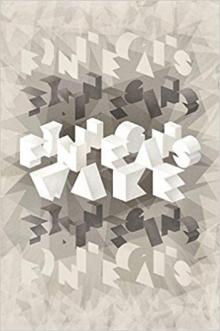 Penguin Classics the Restored Finnegans Wake
Penguin Classics the Restored Finnegans Wake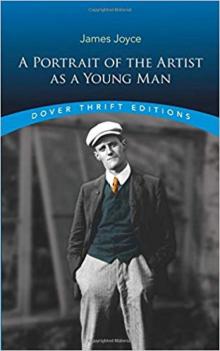 A Portrait of the Artist as a Young Man (Dover Thrift Editions)
A Portrait of the Artist as a Young Man (Dover Thrift Editions)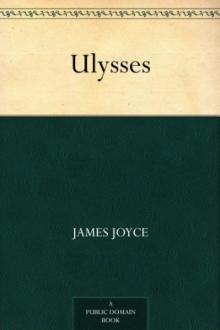 Ulysses
Ulysses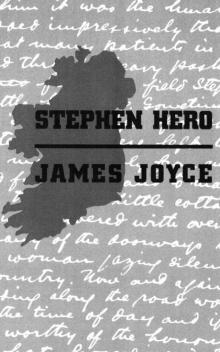 Stephen Hero
Stephen Hero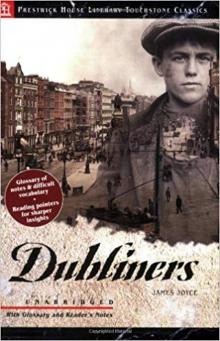 Dubliners
Dubliners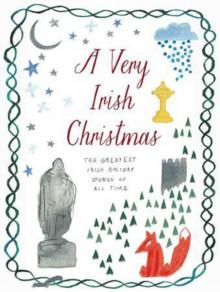 A Very Irish Christmas
A Very Irish Christmas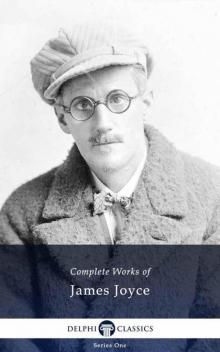 The Complete Works of JAMES JOYCE
The Complete Works of JAMES JOYCE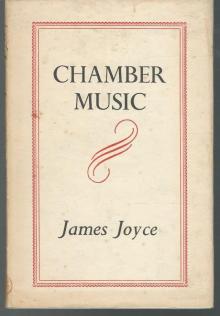 Chamber Music
Chamber Music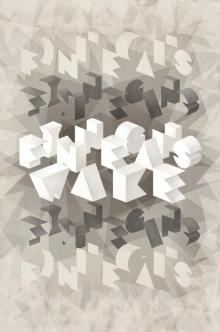 The Restored Finnegans Wake
The Restored Finnegans Wake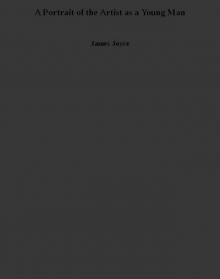 A Portrait of the Artist as a Young Man
A Portrait of the Artist as a Young Man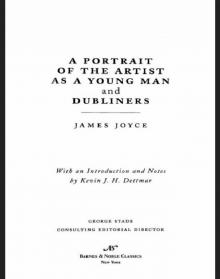 Portrait of the Artist as a Young Man and Dubliners (Barnes & Noble Classics Series)
Portrait of the Artist as a Young Man and Dubliners (Barnes & Noble Classics Series)